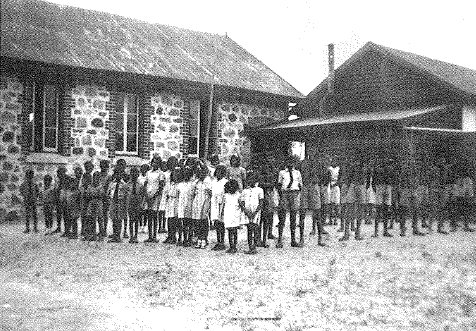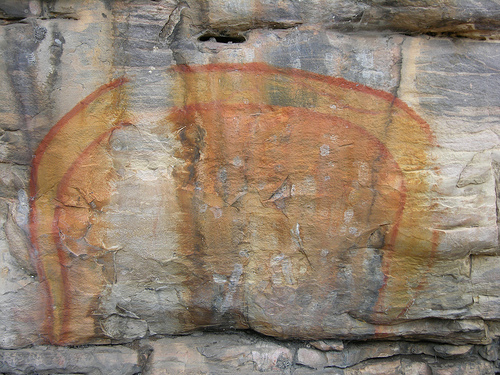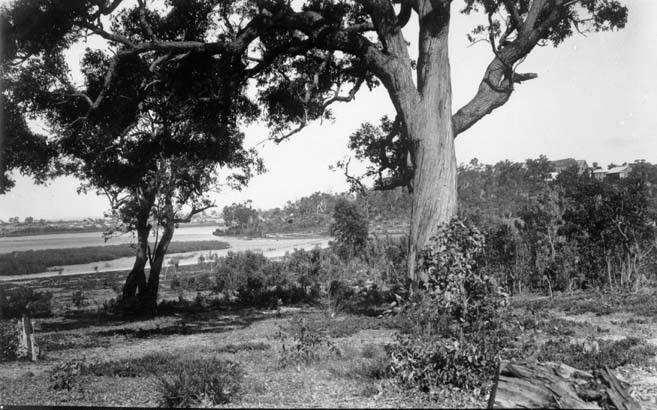|
Wagyl
The Wagyl (also written Waugal and Waagal and variants) is the Noongar manifestation of the Rainbow Serpent in Australian Aboriginal mythology, from the culture based around the south-west of Western Australia. The Noongar describe the Wagyl as a snakelike Dreaming creature responsible for the creation of the Swan and Canning rivers and other waterways and landforms around present day Perth and the south-west of Western Australia. The Wagyl created many local landscape features between the Porongarups and off the coast of Fremantle. Indeed, Porongarup means 'spirit gathering place', from the Noongar nys , Borong , lit=Spirit , label=none, nys , Gar , lit=Gathering , label=none and nys , Up , lit=Place , label=none. The Wagyl was delegated to protect the rivers, lakes, springs and the wildlife, and Wagyl sacred sites tend to be natural sun-traps, located beside bodies of water. The Noongar people were appointed by the Wagyl as the guardians of the land, and the Wagyl was ... [...More Info...] [...Related Items...] OR: [Wikipedia] [Google] [Baidu] |
Noongar
The Noongar (, also spelt Noongah, Nyungar , Nyoongar, Nyoongah, Nyungah, Nyugah, and Yunga ) are Aboriginal Australian peoples who live in the south-west corner of Western Australia, from Geraldton on the west coast to Esperance on the south coast. There are 14 different Noongar groups: Amangu, Ballardong, Yued, Kaneang, Koreng, Mineng, Njakinjaki, Njunga, Pibelmen, Pindjarup, Wadandi, Whadjuk, Wiilman and Wudjari. The Noongar people refer to their land as . The members of the collective Noongar cultural block descend from peoples who spoke several languages and dialects that were often mutually intelligible.; for the Ballardong nys, chungar, label=none; the Yued had two terms, nys, nitin, label=none and nys, chiargar, label=none; the Kaneang spoke of nys, iunja, label=none; the Pindjarup of nys, chinga, label=none; the Koreng of nys, nyituing, label=none; the Mineng of nys, janka, label=none; the Njakinjaki of nys, jennok, label=none, etc. What is now classed a ... [...More Info...] [...Related Items...] OR: [Wikipedia] [Google] [Baidu] |
Noongar Culture
The Noongar (, also spelt Noongah, Nyungar , Nyoongar, Nyoongah, Nyungah, Nyugah, and Yunga ) are Aboriginal Australian peoples who live in the south-west corner of Western Australia, from Geraldton on the west coast to Esperance on the south coast. There are 14 different Noongar groups: Amangu, Ballardong, Yued, Kaneang, Koreng, Mineng, Njakinjaki, Njunga, Pibelmen, Pindjarup, Wadandi, Whadjuk, Wiilman and Wudjari. The Noongar people refer to their land as . The members of the collective Noongar cultural block descend from peoples who spoke several languages and dialects that were often mutually intelligible.; for the Ballardong nys, chungar, label=none; the Yued had two terms, nys, nitin, label=none and nys, chiargar, label=none; the Kaneang spoke of nys, iunja, label=none; the Pindjarup of nys, chinga, label=none; the Koreng of nys, nyituing, label=none; the Mineng of nys, janka, label=none; the Njakinjaki of nys, jennok, label=none, etc. What is now classed a ... [...More Info...] [...Related Items...] OR: [Wikipedia] [Google] [Baidu] |
Bibbulmun Track
The Bibbulmun Track is a long-distance walk trail in Western Australia. It runs from Kalamunda in the east of Perth to Albany, and is long. It is managed by government agencies, and has a foundation. It traverses the Darling Range and has inspired reflections about the state of the Western Australian environment by William J. Lines in his book ''A long walk in the Australian bush''. The name comes from the Bibbulmun, or Noongar people, Indigenous Australians from the Perth area. History The route has been changed twice, partly due to it passing through a significant section of forest that was at risk to change from either forestry, bauxite mining or dieback. The track was suggested in 1972. The groups that had suggested and also who were involved in planning with the then Forests Department of Western Australia were: * Perth Bushwalkers * Western Walking Club * Youth Hostels Association * Scout Association of Australia (W.A. Division) * The Speleological Research Group ... [...More Info...] [...Related Items...] OR: [Wikipedia] [Google] [Baidu] |
Wonambi Naracoortensis
''Wonambi'' is an extinct genus of madtsoiid snakes that lived in late Neogene to late Quaternary Australia. Species of ''Wonambi'' were constrictor snakes unrelated to Australian pythons. Description ''Wonambi'' was a fairly large snake, with the type species (''W. naracoortensis'') exceeding long and the other species (''W. barriei'') reaching less than long. It was a non-venomous, constrictor snake, and may have been an ambush predator that killed its prey by constriction. The head of the animal was small, restricting the size of its prey. Taxonomy and naming ''Wonambi naracoortensis'' was first described from fossils collected at Naracoorte, South Australia, the first extinct snake to be found in Australia. It was given the name Wonambi from the description, by the local Aboriginal people, of a serpent of the Dreamtime. This serpent, a mythological being commonly referred to by both Aboriginal people and Europeans as the Rainbow Serpent, was often held responsible ... [...More Info...] [...Related Items...] OR: [Wikipedia] [Google] [Baidu] |
Rainbow Serpent
The Rainbow Serpent or Rainbow Snake is a common deity often seen as the creator God, known by numerous names in different Australian Aboriginal languages by the many different Aboriginal peoples. It is a common motif in the art and religion of many Aboriginal Australian peoples. Much like the archetypal mother goddess, the Rainbow Serpent creates land and diversity for the Aboriginal people, but when disturbed can bring great chaos. There are many names and stories associated with the serpent, all of which communicate the significance and power of this being within Aboriginal mythology, which includes the worldview commonly referred to as The Dreaming. The serpent is viewed as a giver of life through its association with water, but can be a destructive force if angry. The Rainbow Serpent is one of the most common and well-known Aboriginal stories and is of great importance to Aboriginal society. Not all of the myths in this family describe the ancestral being as a snake. O ... [...More Info...] [...Related Items...] OR: [Wikipedia] [Google] [Baidu] |
Dreamtime (mythology)
The Dreaming, also referred to as Dreamtime, is a term devised by early anthropologists to refer to a religio-cultural worldview attributed to Australian Aboriginal beliefs. It was originally used by Francis Gillen, quickly adopted by his colleague Baldwin Spencer and thereafter popularised by A. P. Elkin, who, however, later revised his views. The Dreaming is used to represent Aboriginal concepts of ''Everywhen'', during which the land was inhabited by ancestral figures, often of heroic proportions or with supernatural abilities. These figures were often distinct from gods, as they did not control the material world and were not worshipped but only revered. The concept of the Dreamtime has subsequently become widely adopted beyond its original Australian context and is now part of global popular culture. The term is based on a rendition of the Arandic word ''alcheringa'', used by the Aranda (Arunta, Arrernte) people of Central Australia, although it has been argued tha ... [...More Info...] [...Related Items...] OR: [Wikipedia] [Google] [Baidu] |
Swan River (Western Australia)
The Swan River () is a river in the south west of Western Australia. The river runs through the metropolitan area of Perth, Western Australia's capital and largest city. Course of river The Swan River estuary flows through the city of Perth. Its lower reaches are relatively wide and deep, with few constrictions, while the upper reaches are usually quite narrow and shallow. The Swan River drains the Avon and coastal plain catchments, which have a total area of about . It has three major tributaries, the Avon River, Canning River and Helena River. The latter two have dams (Canning Dam and Mundaring Weir) which provide a sizeable part of the potable water requirements for Perth and the regions surrounding. The Avon River contributes the majority of the freshwater flow. The climate of the catchment is Mediterranean, with mild wet winters, hot dry summers, and the associated highly seasonal rainfall and flow regime. The Avon rises near Yealering, southeast of Perth: it meand ... [...More Info...] [...Related Items...] OR: [Wikipedia] [Google] [Baidu] |
Burlong Pool, Western Australia
Burlong Pool is a section of the Avon River in Western Australia between Spencers Brook and Northam. Water trains Burlong Pool was a former railway stopping place, which was used as a location for drawing water into the water trains to the Eastern Goldfield locations prior to the completion of the Goldfields Water Supply Scheme. During dry weather in the late 1890s up to five separate water trains per day would be drawing water from the pool and travelling between Northam and the goldfields. Swimming location Following the completion of the Goldfields water supply pipeline the water was no longer extracted from the pool, but the location was notable for being used as the Northam swimming carnival location, swimming location and rail excursions, and the site of drownings. Wagyl location As a long deep pool that was well watered in summertime, the location was known to the Noongar as a place where the Wagyl had a summer resting place. Military history Burlong Pool was owned ... [...More Info...] [...Related Items...] OR: [Wikipedia] [Google] [Baidu] |
Lake Monger, Western Australia
Lake Monger ( nys, Keiermulu) is a large urban wetland on the Swan Coastal Plain in suburban Perth, Western Australia nestled between the suburbs of Leederville, Wembley and Glendalough. Located less than from the city of Perth and situated alongside the Mitchell Freeway, it runs approximately north-west to south-east towards the Swan River and consists of of mainly open shallow water, with an island of in the south-west corner. The of lake and the surrounding parklands are known as the Lake Monger Reserve. The lake is used extensively for recreation and is a major tourist attraction, with up to visitors per week. Activities include bird watching and exercise. A paved walking/cycling track encircles the lake. Car parking, playground equipment, and barbecue facilities are also provided. Etymology The indigenous Noongar people of the south-western region call the area ''Keiermulu'' (which translates to "the home fires or camp"), ''Lake Galup,'' or ''Lake Kalup''. Afte ... [...More Info...] [...Related Items...] OR: [Wikipedia] [Google] [Baidu] |
Aboriginal Mythology
Australian Aboriginal religion and mythology is the sacred spirituality represented in the stories performed by Aboriginal Australians within each of the language groups across Australia in their ceremonies. Aboriginal spirituality includes the Dreamtime (''the Dreaming''), songlines, and Aboriginal oral literature. Aboriginal spirituality often conveys descriptions of each group's local cultural landscape, adding meaning to the whole country's topography from oral history told by ancestors from some of the earliest recorded history. Most of these spiritualities belong to specific groups, but some span the whole continent in one form or another. Antiquity An Australian linguist, R. M. W. Dixon, recording Aboriginal myths in their original languages, encountered coincidences between some of the landscape details being told about within various myths, and scientific discoveries being made about the same landscapes. In the case of the Atherton Tableland, myths tell of the or ... [...More Info...] [...Related Items...] OR: [Wikipedia] [Google] [Baidu] |
Australian Aboriginal Deities
The following is a list of Australian Indigenous Australian deities and spirits. New South Wales *Baiame, creator god of the peoples of New South Wales *Baloo, Kamilaroi moon god who keeps three pet snakes * Birrahgnooloo, Kamilaroi goddess of fertility who would send floods if properly asked to *Daramulum, sky hero and son of Baiame and Birrahngnooloo *Dirawong, Bundjalung creator being *Ganhanbili, second wife of Baiame * Wurrunna, culture hero *Yhi, Kamilaroi solar goddess associated with light and creation Northern Territory * Adnoartina, the lizard guard of Uluru *Altjira, Arrernte sky god who created the earth * Ankotarinja, first man of Arrernte mythology * Onur, Karraur lunar deity *Bamapana, Yolngu trickster spirit who creates discord * Banaitja, creator deity *Barnumbirr, Yolngu creator spirit * Barraiya, creator of the first vagina *Bobbi-Bobbi, benevolent Binbinga snake deity *Djanggawul, three creator-siblings of northeast Arnhem Land mythology *Galeru, rainb ... [...More Info...] [...Related Items...] OR: [Wikipedia] [Google] [Baidu] |
Australian Aboriginal Mythology
Australian Aboriginal religion and mythology is the sacred spirituality represented in the stories performed by Aboriginal Australians within each of the Aboriginal Australian languages, language groups across Australia in their Aboriginal ceremonies, ceremonies. Aboriginal spirituality includes The Dreaming, the Dreamtime (''the Dreaming''), songlines, and Aboriginal oral literature. Aboriginal spirituality often conveys descriptions of each group's local cultural landscape, adding meaning to the whole country's topography from oral history told by ancestors from some of the earliest recorded history. Most of these spiritualities belong to specific groups, but some span the whole continent in one form or another. Antiquity An Australian Linguistics, linguist, R. M. W. Dixon, recording Aboriginal myths in their original languages, encountered coincidences between some of the landscape details being told about within various myths, and Hard science, scientific discoveries bein ... [...More Info...] [...Related Items...] OR: [Wikipedia] [Google] [Baidu] |








